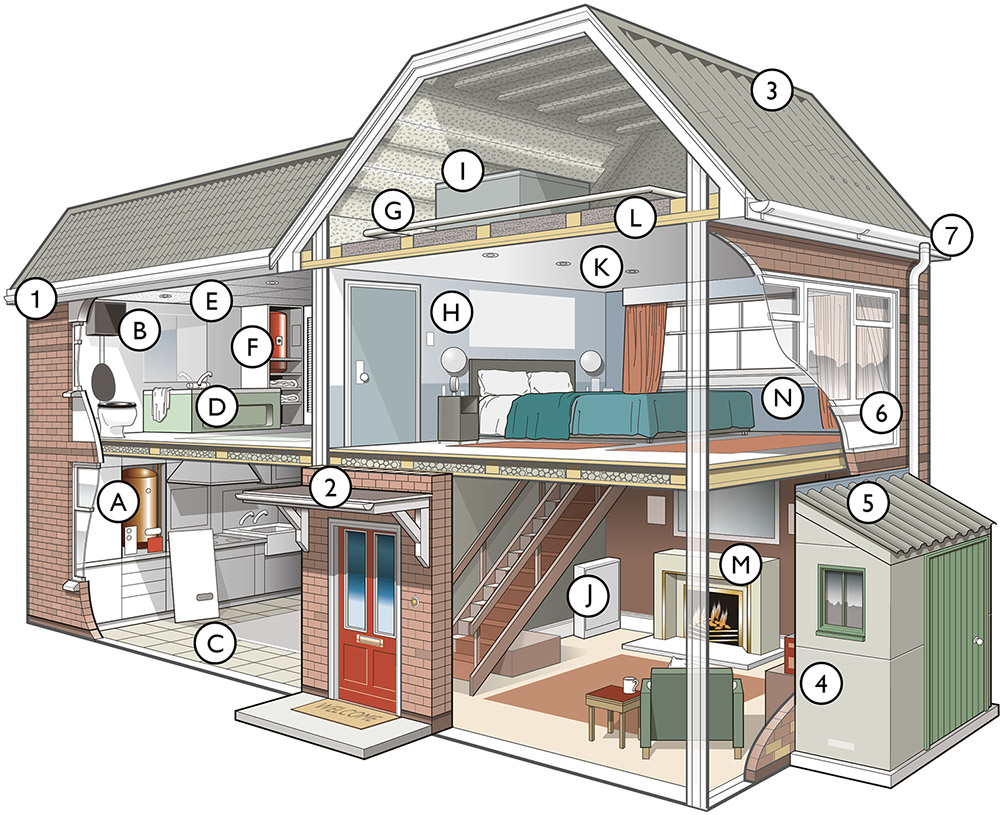
Inside
Outside
Homes in the UK that were constructed before the asbestos ban in November 1999 are likely to still contain asbestos. This is especially true for homes built before 1985, as asbestos was extensively used in house construction until that point. Although a partial asbestos ban was implemented in 1985, it wasn’t until 1999 that the use of chrysotile (white asbestos) was also banned, resulting in a complete prohibition on the import, manufacture, and use of asbestos in the UK. Chrysotile was the most common type of asbestos used in UK construction, which is why older buildings constructed before 1999 are likely to contain this hazardous material1.
Why was asbestos used in homes? Asbestos was a popular building material in the UK from around 1930 to the mid-1980s due to several factors:
Where might asbestos be found in older homes? If you’re wondering whether your pre-1999 home contains asbestos, consider conducting a visual inspection (without physically handling any suspected asbestos-containing materials). Here are common places where asbestos may be present:
Remember that asbestos materials are only dangerous if they are damaged or disturbed, releasing harmful fibers into the air. If you suspect asbestos, consider arranging for a professional asbestos survey or testing to confirm its presence